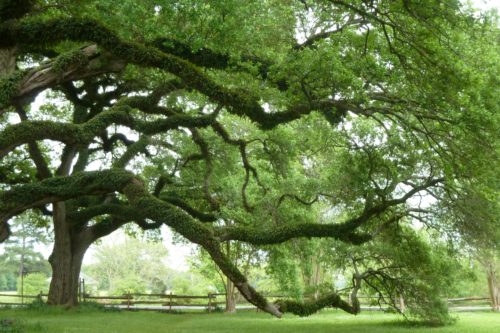 Purdue University - Extension - Forestry and Natural Resources
Purdue University - Extension - Forestry and Natural Resources
Got Nature? Blog

In the first study of its kind, scientists David Nowak and Eric Greenfield of the U.S. Forest Service Northern Research Station have calculated just how beneficial trees are to human health. As well as providing oxygen, shade and beautification, trees help to remove air pollution by catching harmful airborne particles on the leaves and branches and by absorbing gases like nitrogen dioxide (NO2), ozone (O3), and sulfur dioxide (SO2). Nowak and Greenfield concluded that trees save over 850 human lives a year and prevent over 670,000 cases of acute respiratory symptoms from diseases like asthma, bronchitis, emphysema and chronic pulmonary obstructive disease (COPD).
While trees in suburban areas remove a higher amount of pollution due to their large quantity, urban trees have a greater direct effect on human health and monetary savings due to their closer proximity to people. Altogether, trees improved air quality in the continental U.S. by less than 1% in 2010, according to computer simulations iTree and BenMAP. This might not sound like much, but this means that trees removed 17.4 million tons of air pollution and saved the country over $6.8 billion in medical expenses. This really goes to show how much of a difference trees can add to the quality of our lives, especially in urban areas.
Resources
Tree and Forest Effects on Air Quality and Human Health in the United States, U.S. Forest Service Northern Research Station
Urban Trees Help Us Breathe, National Association of State Foresters
Trees Pay Us Back In the Midwest Region, U.S. Department of Agriculture (USDA)
iTree, U.S. Forest Service
BenMAP, United States Environmental Protection Agency
U.S. Forest Service Northern Research Station

Recent Posts
- Experience Indiana’s Sandhill Crane Fall Migration
Posted: November 8, 2024 in Forestry, Wildlife - Purdue Extension’s Showcase, Impacting Indiana
Posted: in Community Development, Forestry, Forests and Street Trees, Gardening, Land Use, Natural Resource Planning, Timber Marketing, Urban Forestry, Wildlife, Wood Products/Manufacturing, Woodlands - Deer Season is Here, MyDNR and Wild Bulletin
Posted: in Forestry, Wildlife, Woodlands - ID That Tree: Learn to Identify Hoptree/Wafer Ash
Posted: October 30, 2024 in Forestry, Forests and Street Trees, How To, Urban Forestry, Wildlife - Publication – Handbook on Processing Fish for Small-Scale Fish Farmers
Posted: October 17, 2024 in Aquaculture/Fish, Aquatic/Aquaculture Resources, How To, Publication, Wildlife - When Roundup Isn’t Roundup – Purdue Landscape Report
Posted: in Forestry, Gardening, Plants, Urban Forestry - American Citizen Planner – Indiana Program Celebrating 4 Years of Impact
Posted: October 16, 2024 in Community Development, Land Use - IN DNR Deer Updates – Epizootic Hemorrhagic Disease Detected in Several Areas in Indiana
Posted: in Alert, Disease, Forestry, How To, Wildlife, Woodlands - Black Spot of Elm – Purdue Landscape Report
Posted: October 15, 2024 in Urban Forestry, Wildlife, Woodlands - Economics and Aquaculture Expert Kwamena Quagrainie is Featured Specialist in ANR Newsletter
Posted: in Aquatic/Aquaculture Resources, Great Lakes
Archives
Categories
- Alert
- Aquaculture/Fish
- Aquatic/Aquaculture Resources
- Ask the Expert
- Christmas Trees
- Community Development
- Disease
- Drought
- Forestry
- Forests and Street Trees
- Gardening
- Got Nature for Kids
- Great Lakes
- How To
- Invasive Animal Species
- Invasive Insects
- Invasive Plant Species
- Land Use
- Natural Resource Planning
- Nature of Teaching
- Plants
- Podcasts
- Ponds
- Publication
- Safety
- Spiders
- Timber Marketing
- Uncategorized
- Urban Forestry
- Webinar
- Wildlife
- Wood Products/Manufacturing
- Woodland Management Moment
- Woodlands